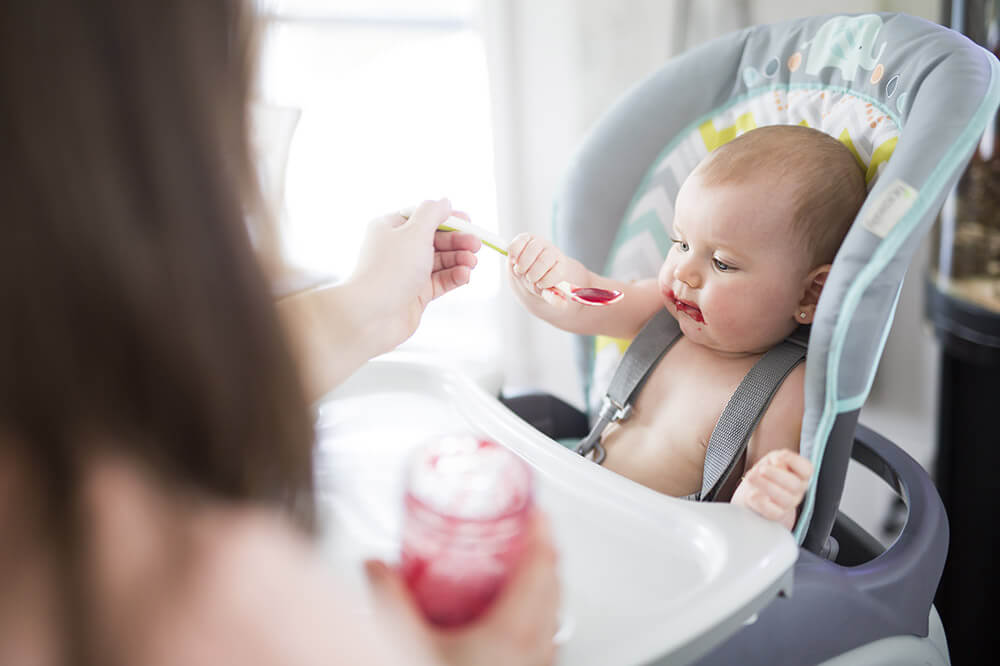Purees, cereals and “ready-to-eat” foods
Making individual purées may seem like a lot of work but here are a few tips:
- Freeze them in small containers like ice trays.
- You don’t need to cook especially for baby, just add a couple of extra carrots to your steamer while making your dinner and mash them or process them with a little breast of formula milk for baby’s lunch.
- If you are batch-steaming veggies for baby, steam a few more and turn them into a tasty soup for your lunch!
- All those individual veggie purées in the fridge can be mixed to make more interesting meals for baby after reactions to those individual foods have been ruled out.
- Use purées as dips for soft veggies or even breads once you’ve introduced wheat and gluten and rice cakes once you have introduced cereals.
How about baby cereal?
Baby cereals, like baby rice, are an easy first foods but they tend to be refined (i.e white rice) and a lot more processed than a home-made veggie purée. Baby cereal tends to be fortified but young babies still get most of the nutrients they need from breast or formula milk so our advice is to start your baby on freshly cooked food which research shows increases food acceptance later in life [1].
Ready-to-eat baby foods
They are convenient and some of them made with organic ingredients so they can be very helpful when out and about. However, ensure the foods you choose do not contain any added sugar and ideally not a huge proportion of fruit (especially dried) as that can encourage a sweet tooth in your baby. Also remember that any foods that you prepare at home with fresh ingredients will be more nutritious than anything you can buy in a long-life jar or pouch. Cooking baby’s food from an early age also makes it easier for toddlers to transition onto family food.

